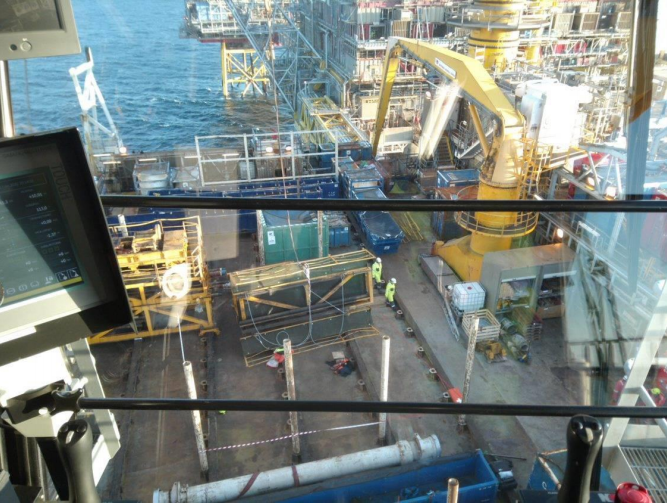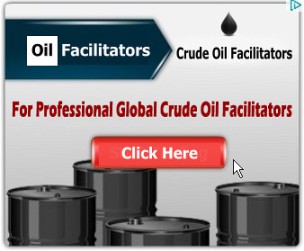The Norwegian oil and gas safety body PSA Norway has found 'multiple complex' factors that led to a worker injury on Equinor's Oseberg B platform, off Norway, in April this year, when a worker fell from a height of 3.6 in an accident that could have been fatal. PSA Norway also discovered several breaches of regulations.
Per the safety body, the incident occurred during a work operation which formed part of preparations for skidding the derrick on the platform. During the operation, a 5.5-tonne catwalk extender was to be disconnected and moved to dedicated storage.
Four wire rope casing slings were attached by shackles to pad eyes on the extended and to hooks on the crane pennant. When the crane operator tightened the slings, one became snagged on a structural component on the underside of the extender, which was almost immediately tipped over onto its side.
Fractured wrist, cracked spine
During this operation, a worker was positioned on top of the extender, fulfilling the roles of both slinger and banksman. He fell about 3.6 meters and landed on the pipe deck. The railings on the extender ended up about 30 centimeters from his head.
The roustabout suffered a fractured wrist, a cracked spine, a cut on their head, and a concussion. The extender had only minor structural damage.
Immediate first aid was given on the spot to the injured person, and the emergency response organisation was alerted and mustered. The injured person, who was conscious throughout, was treated by the medic, transported to the hospital on Oseberg A and sent to Haukeland Hospital by SAR helicopter from Oseberg at 15.39. Work on Oseberg B was halted, and the area secured and cordoned off.
"Under slightly different circumstances, the incident had a potential for even more serious injury or death for the roustabout," the PSA Norway said.
 The catwalk and the tipped-over extended, viewed from the operator position in the
The catwalk and the tipped-over extended, viewed from the operator position in the
crane cabin. - Credit: PSA
The direct cause of the incident was that one casing sling became snagged on the extender’s structure during the raising of the crane hook to which the sling had been attached to.
However, PSA said that the underlying causes of the incident "are multiple and complex," but relate primarily to unfamiliarity with the equipment and lack of risk understanding of the uninstallation and the preparations which formed part of the lifting operation.
The latter, PSA said, related particularly to removing the bolts securing the 4 extenders to the permanent catwalk before the section was secured with tightened slings to the crane. The management system for safe use of lifting equipment complied wasn't with, either, and raising the crane hook began before the area had been readied.
The underlying causes of the incident relate primarily to the following, as shared by PSA Norway:
• Lack of an available materials handling plan, user manuals or work instructions for installing and uninstalling the extender.
• Inadequate knowledge of the equipment.
• Failure to plan the operation in such a way that risks were adequately identified: − inadequate understanding of risk related to uninstalling and readying for the lifting operation − the bolts securing the extender to the permanent catwalk were removed before the extender had been secured by tightening the slings with the crane − the extender was unstable when the bolts were removed – an assessment of photographs from the incident site suggests that the design of the extender, 13 its assumed center of gravity and its positioning – supported primarily on a single deck beam – made it unstable − the injured person was on top of the extender (load).
• Inadequate compliance with the management system for safe use of lifting equipment because: − preparing for the lifting operation was not assessed as part of a lifting operation − the crane operator began a lifting operation by tightening the slings while personnel were on top of the extender (load) and without the latter being secured − the crane operator raised the hook attached to the load while the slinger/ banksman was positioned on the load − the tightening was not planned in such a way that risks had been sufficiently identified, since the assignment was not regarded as part of the lifting operation.
• Safety culture in the work team: − registered incidents in Synergi show several serious incidents in recent years − apparently inadequate collaboration and understanding of roles − risk understanding related to organizing lifting operations and use of lifting equipment − work done with inadequate or non-existent governing documentation, and without complying with governing documentation.
• Inadequate follow-up by leading KCA Deutag (contractor on Oseberg) personnel to ensure implementation of and compliance with the management system for safe use of lifting equipment.
• Inadequate exercise of Equinor’s see-to-it duty to follow up KCAD’s implementation of and compliance with the management system for safe use of lifting equipment.
The investigation has identified four nonconformities with the regulations. These relate to deficiencies in Equinor’s exercise of its see-to-it duty;
the management system; planning and risk assessment; and execution of the lifting operation.
The PSA Norway has now ordered Equinor to see to it that the preconditions for safe execution of lifting operations on Oseberg B are taken care of and to follow up that possible measures function as intended. The deadline for compliance with the order is set for December 31, 2020.




No comments
Post a Comment